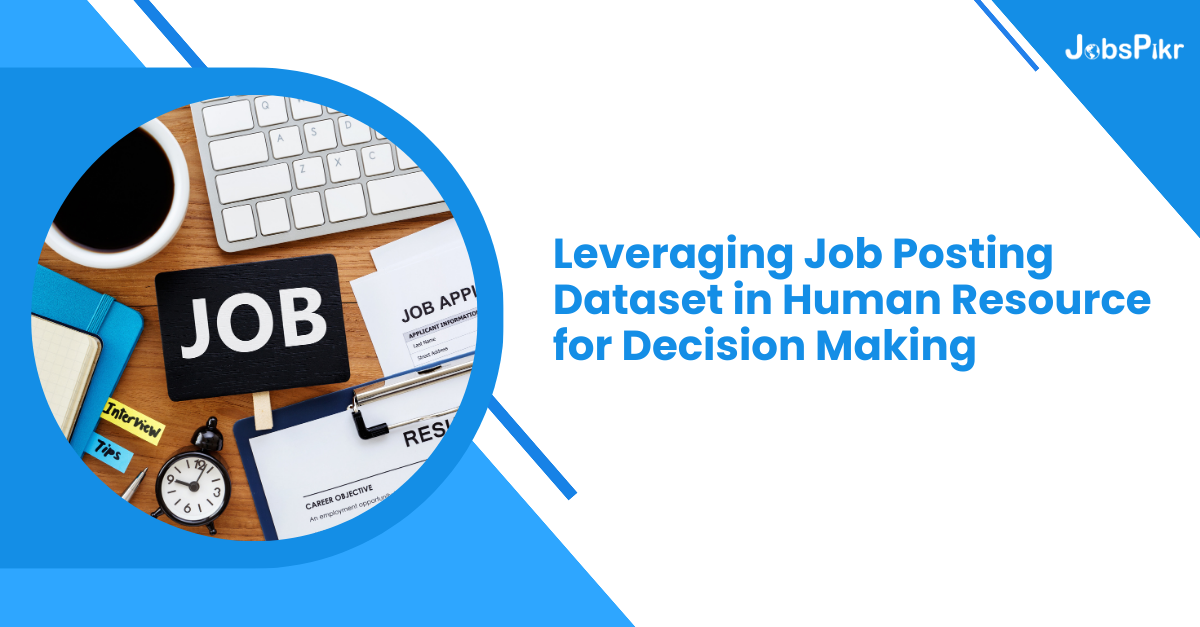Human Resources (HR) departments are increasingly turning to data-driven strategies to streamline their operations and anticipate future trends. Utilizing a job posting dataset is a groundbreaking approach that can significantly transform the HR functions. HR professionals can use job market data to forecast hiring needs, industry trends, and economic impacts.

Source: Webspidermount
Importance of Job Posting Dataset:
Job posting datasets contain extensive and detailed records of job listings, aggregated from multiple platforms and spanning various industries. These datasets are invaluable resources, brimming with insights on required qualifications, job responsibilities, and the demand for specific roles in different industries and locations.
By leveraging such data, HR departments can develop a nuanced understanding of job market trends and dynamics. This knowledge is pivotal for effective strategic planning and decision-making, allowing HR professionals to anticipate changes and adapt their recruitment strategies accordingly. Furthermore, job posting datasets can help identify emerging roles and skill requirements, ensuring that organizations remain competitive in attracting and retaining top talent.
Role of Predictive Analytics in Human Resource:
HR utilizes historical job data to project future trends and make informed predictions about upcoming shifts in the employment landscape. This analytical approach is instrumental in enhancing hiring strategies and workforce planning. For example, a notable increase in job postings for data analysis in a particular region could signal an upcoming surge in demand for these skills, allowing HR departments to strategically recruit and prepare the workforce ahead of time. Moreover, these analytics can help HR professionals identify potential skills gaps and develop targeted training programs, thus ensuring that the workforce is well-equipped to meet future challenges.

Source: HR University
Job Posting Dataset Applications in Human Resource:
- Forecasting Hiring Needs:
By analyzing trends in job postings, HR can predict future hiring needs and develop talent acquisition strategies accordingly. This proactive approach helps in filling vacancies faster and more efficiently, ensuring that the organization remains competitive in attracting top talent.
- Identifying Industry Trends:
Job market data can reveal emerging roles and skills, helping HR to stay ahead of the curve. For example, an increase in digital marketing roles may prompt the need for additional training and development programs for existing staff. Moreover, recognizing shifts towards remote work or freelance opportunities allows companies to adapt their work environments and policies to attract a broader range of candidates.
- Assessing Economic Impacts:
Job data analysis helps HR professionals understand how different sectors are affected by economic changes. This information can be crucial in restructuring or diversifying the company’s workforce to mitigate risks associated with economic downturns. By doing so, HR can ensure organizational resilience and maintain workforce efficiency during various economic cycles.
- Enhancing Workforce Diversity:
Utilizing job posting datasets can also aid in enhancing diversity within the company. By analyzing demographic data associated with job applicants and postings, HR can identify areas lacking in diversity and implement recruitment strategies that promote inclusiveness.
Job Posting Data Challenges & Considerations:
While the use of job market datasets in predictive analytics offers numerous benefits, it also comes with challenges. Data privacy and accuracy are significant concerns, as HR departments must ensure that the data they use is up-to-date and collected ethically. Additionally, interpreting vast amounts of data requires advanced analytical skills and tools. Ensuring the relevance and reliability of the data is critical, as outdated or incorrect data can lead to poor decision-making and potentially harmful impacts on the company’s strategic initiatives. Furthermore, navigating the legal and ethical implications of using personal data is crucial for maintaining trust and compliance.
Conclusion:
As the business world becomes more interconnected and competitive, the ability to analyze and interpret job data effectively will be increasingly vital for HR professionals. A robust job posting dataset provides a foundation for predictive analytics, helping HR departments to anticipate and adapt to hiring trends, industry shifts, and economic changes effectively. By embracing job data analysis, HR can enhance strategic decision-making and contribute to the overall success and resilience of their organizations. This deepened insight allows for a more proactive approach to workforce planning, better alignment of skills with organizational needs, and improved foresight in navigating market uncertainties.
By integrating advanced data analytics into HR practices, companies can ensure they remain agile and informed in a fluctuating job market. Emphasizing data-driven strategies enables organizations to not only respond to immediate changes but also to forecast and prepare for future challenges. This strategic foresight is essential for sustaining growth and maintaining a competitive edge in rapidly evolving industries. Moreover, leveraging analytics enhances the HR role from administrative to strategic, positioning HR leaders as key contributors to business strategy discussions and decisions. Thus, the integration of sophisticated job posting datasets into HR systems is not just a trend but a fundamental shift towards a more dynamic and evidence-based management approach.



